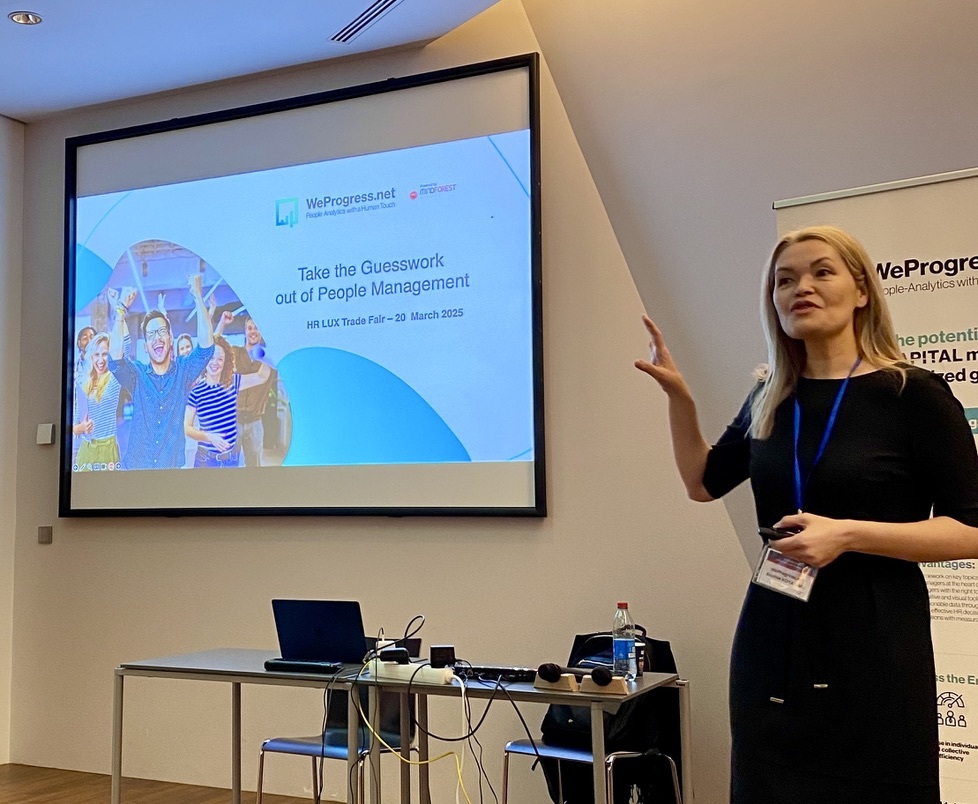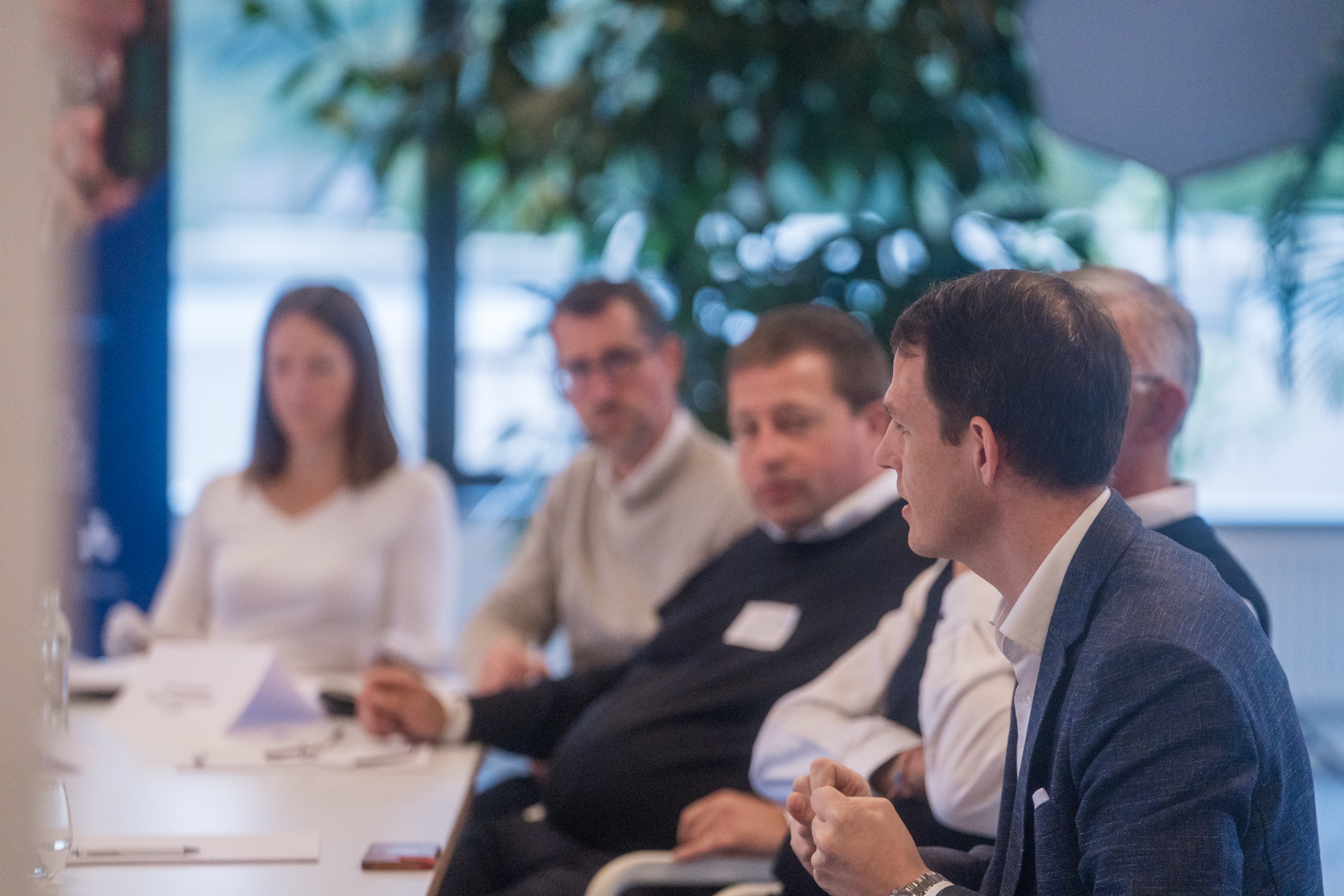The team meeting, much more than a meeting: a real tool for employee engagement
At MindForest for several years we have had a habit, come rain, shine or snow (or if the planet is hit by a pandemic): we gather the entire team once a month for 90 minutes.
This precious moment allows employees to get together, to pass on information (about recruitment, new clients, the status of ongoing projects, memos for community life in the office, etc.), or to help each other with various issues.
It is also an opportunity to celebrate successes and achievements (both professional and personal), to pass on knowledge and share experience and to train each other in new methods and tools. This important gathering for MindForest is the Team Meeting.
Since the beginning of the Covid crisis, we all know that it has been particularly difficult to get together. However, for the MindForest team it was unthinkable to give up this meeting. For two years, we continued to meet despite the obstacles, adapting the format of the Team Meeting: it took place online thanks to the Zoom application… And on 25 April, the MindForest team organised its first face-to-face Team Meeting in two years! We enjoyed it so much that we would like to talk about this experience and share our best practices. What are the advantages of a Team Meeting? How can it be integrated into a company’s strategy and ensure its effectiveness?
What exactly is a Team Meeting?
A Team Meeting can be defined as an event during which a team (department, company, or even a sports team for example) meets. The objectives of a team meeting include: effective information sharing, providing a framework for an exchange on various topics and creating links between company employees.
There is no recommended frequency or duration for a Team Meeting. At MindForest, for example, all employees of the company meet once a month for 1.5 hours.
It is of course possible to adjust this frequency and duration to suit the needs of your company. The meeting can last as long as desired/necessary (although it is strongly recommended not to exceed two hours). Of course, if there is no relevant topic on the agenda, the meeting can be shortened or cancelled to maintain the interest and enthusiasm of the participants.
It is up to you to choose the rhythm that suits you best to ensure good communication: daily, weekly, fortnightly!
What are the advantages of a Team Meeting?
Quite often, team meetings are not universally appreciated. Indeed, many employees consider them counter-productive, time-consuming, even pointless… But very often, the reason for this lack of interest is due to their poor organisation. However, if introduced on a regular basis, a team meeting can have many advantages, such as:
- Creating synergies between the different members
- Improving communication and encouraging the circulation of information
- Strengthening group cohesion and bringing teams together
- Engaging, motivating and retaining employees
- Celebrate successes and achievements
Thus, a team meeting remains an indispensable means of exchanging ideas and engage employee.
How do you organise effective team meetings?
At MindForest, this is a ritual in which all employees participate. To attract and maintain their attention during the Team Meeting, it is important to organise it in advance and ensure that it does not drag on. There are many ways of organising an effective meeting; here are some of the rules we use for our Team Meetings if you would like some inspiration:
DEFINE AND COMMUNICATE THE AGENDA
participants should know in advance which topics will be discussed and if they have anything to prepare.
ANNOUNCE THE PURPOSE OF THE MEETING AND STICK TO IT:
list the chronology of topics from the most to the least important, so that the decisions that require the most time are taken first.
LEAD THE MEETING IN AN ENTHUSIASTIC AND DYNAMIC WAY:
the meeting leader is the conductor of the orchestra, alternating between presentations and dialogue with the participants. He/she is also responsible for re-focusing the participants if they get off track.
KEEP A CAREFUL EYE ON THE TIMING
even if the duration of the Team Meeting may vary from one team to the next, we advise you to define a duration for each topic in advance, as a means of ensuring that the meeting’s objectives are met. This will avoid the frustration of not having been able to address the topic.
REMEMBER TO PLAN BREAKS
If you plan Team Meetings that last longer than one hour, add a break. This will allow participants to better assimilate information by talking with each other and to remain attentive for the rest of the meeting.
ENCOURAGE DISCUSSION AND SPEAKING OUT/PRACTICE ACTIVE LISTENING
encourage all participants who wish to speak to do so, to share their opinion and advice and thus obtain a constructive meeting. You could also allow time at the end of your meeting for people who want to make any other points.
CONCLUDE THE MEETING
remind everyone about the decisions taken and summarise the issues discussed, this is also a good time to thank the participants for their commitment.
CIRCULATE A REPORT
in order to ensure that information is shared and retained, it is essential to always send a report to participants.
Our 5 tips to make your team meetings worth it
MindForest employees meet once a month to discuss their projects, maintain relationships with colleagues, and anticipate and overcome challenges together. Here are our best practices to make your Team Meeting just as effective:
- Do not cancel: this ensures that the Team Meeting becomes a habit, if possible always schedule your meetings on the same day and at the same pace
- Use a variety of presentation tools: do not just use PowerPoint (try out dynamic supports, paper format, etc.)
- Create informal moments: set up games, break times, share a meal, anecdotes…
- Set up fun workshops and activities: at our Team Meeting on 25th April, we started the meeting with an “Ice Breaker”. This generic term refers to an activity that allows you to start a meeting in a playful way, by “breaking the ice”. It is also possible to use animations, games and applications, virtual or otherwise, to capture the attention of participants and ensure that important information and key messages are understood.
A special tip: we have also researched and tested some applications such as Klaxoon or Kahoot, which offer quizzes you can personalise.
- Try holding meetings away from the office: it doesn’t matter where, as long as it’s outside the usual working environment!A special tip: go outside or rent meeting or co-working spaces. For example, the MindForest One Lounge, rue Sainte-Zithe in Luxembourg City.
The Team Meeting, so much more than just a meeting
Corporate Social Responsibility (CSR) is an integral part of our strategy and is part of a resolutely participative approach; it is supported by the Management and an accepted concept for all our employees who actively contribute to it via our CSR committee created in 2014. Through our internal actions, our certifications as well as our varied expertise, we aspire to set an example, share our best practices, encourage our clients to adopt a well-constructed CSR approach and act in an environmentally responsible manner. We take our CSR commitment very seriously, not only because it is the right thing to do, but also because we believe it is a key element in the growth of our business.
We take our CSR commitment very seriously, not only because it is the right thing to do, but also because we believe it is a key element in the growth of our business.
The Team Meeting is part of two of the four pillars of a CSR strategy: economic and social:
- Collective intelligence: by including workshops, games, and informal moments during the team meeting you encourage mutual support and facilitate the generation of ideas and innovation. A united team is more efficient and productive.
- Relationships and working conditions: the healthier the relationships, the more trust is built up within the team and the better the working environment is for employees’ well-being.
- The development of multiple and transversal skills: Each month, a person presents a project, a tool or a method. Thanks to these exchanges, employees share knowledge and increase their skills.
As with any meeting, the aim must be to provide added value for all participants, whose involvement normally constitutes a major cost factor for the company. If everyone shares the same mindset of knowledge sharing and mutual respect, then the contributions will reflect this and your people will look forward to the next Team Meeting!
A company’s greatest asset is the people who work for it, if they feel united as a team, they will work well together, where better to reflect this than at a regular interactive Team Meeting?
WANT TO RECEIVE OUR LATEST THOUGHT LEADERSHIP CONTENT?
Related posts
 Take the Guesswork out of People Management
Take the Guesswork out of People Management
 From processes to people: achieving quality
From processes to people: achieving quality
 Daring to lead Positive Transformation: What if Positive Emotional Capital was your key to sustainable change?
Daring to lead Positive Transformation: What if Positive Emotional Capital was your key to sustainable change?
 Why hire Change management professionals? We can do it alone!
Why hire Change management professionals? We can do it alone!
 Digital Transformation and Change Management: Lessons shared in an event hosted by Cebi and MindForest
Digital Transformation and Change Management: Lessons shared in an event hosted by Cebi and MindForest



